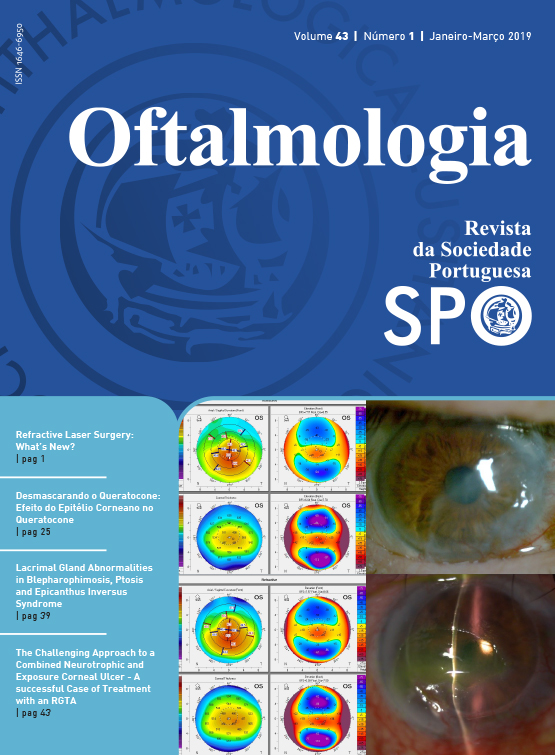Lacrimal gland abnormalities in blepharophimosis, ptosis and epicanthus inversus syndrome
DOI:
https://doi.org/10.48560/rspo.15203Abstract
Abstract:
Introduction: Blepharophimosis, ptosis and epicanthus inversus syndrome (BPES) is an uncommon autosomal dominant congenital disease caused by a mutation in the FOXL2 gene. Its major features are blepharophimosis, blepharoptosis, epicanthus inversus and telecanthus, and recently there have been some reports linking this disease to lacrimal gland (LG) agenesis. We studied the LG changes in BPES patients of our institution.
Material and methods: Six patients with ages between 1 and 39 years old were studied. Lacrimal film evaluation was performed by slit-lamp biomicroscopy and Schirmer I test. LG volume was measured on computed tomography scans. All patients were screened for FOXL2 mutations.
Results and discussion: The lacrimal film was abnormal in 2 patients. Both presented a reduced lacrimal meniscus; in one patient the Schirmer I test was decreased and in the second patient a significative superficial keratopathy was visible. An absence of the LG was disclosed on both CT scans. In 2 other patients LG volume was bilaterally reduced and in 1 it was normal. The remaining 1-year-old child had visible LGs and a normal lacrimal status evaluation. In this group of patients, clinical changes found on the lacrimal film evaluation were greatly associated to LG dysgenesis. A FOXL2 gene mutation was found in all cases, one of them not previously described.
Conclusion: This study reinforces the recently described association between BPES and alacrimia and the importance of lacrimal evaluation in these patients, mainly if they are surgical candidates. A new FOXL2 mutation not previously described is also reported.
Downloads
Downloads
Published
How to Cite
Issue
Section
License
Do not forget to download the Authorship responsibility statement/Authorization for Publication and Conflict of Interest.
The article can only be submitted with these two documents.
To obtain the Authorship responsibility statement/Authorization for Publication file, click here.
To obtain the Conflict of Interest file (ICMJE template), click here







